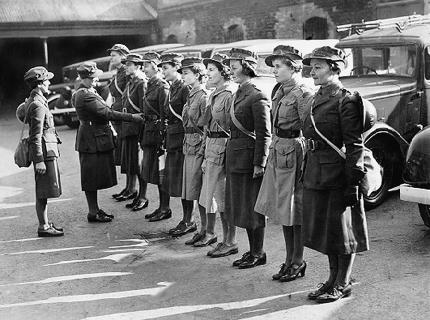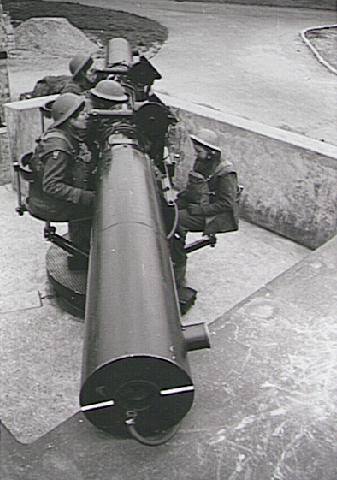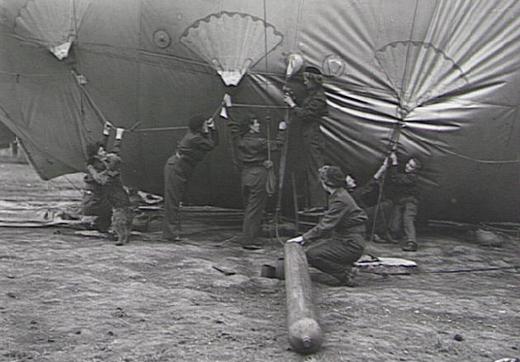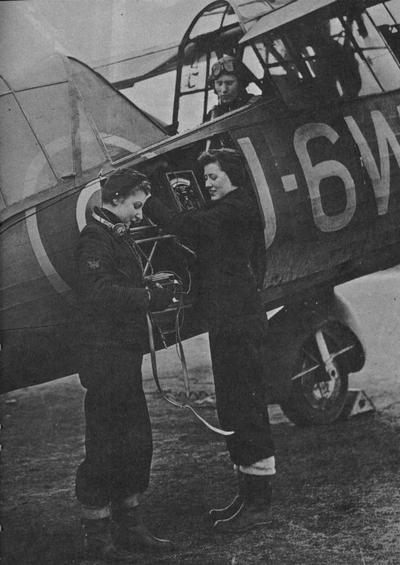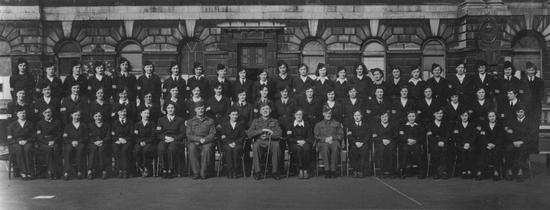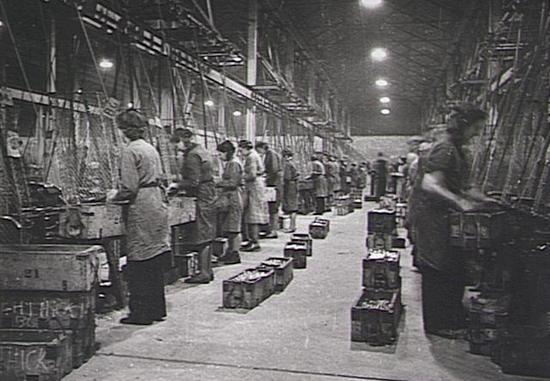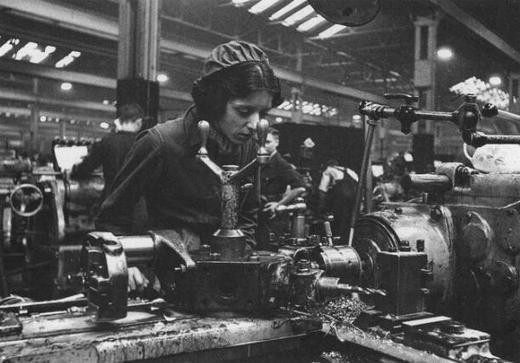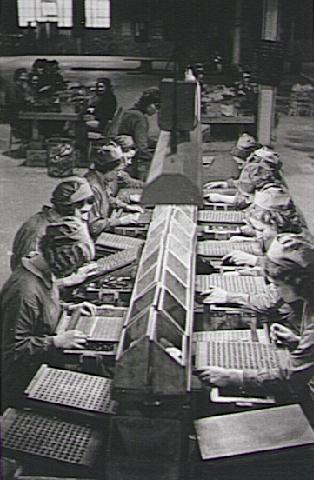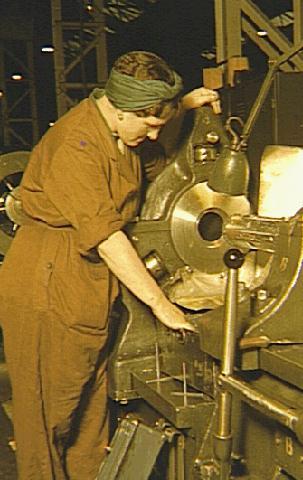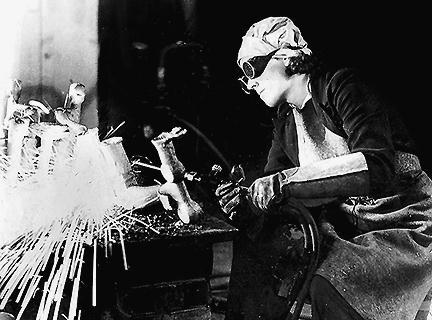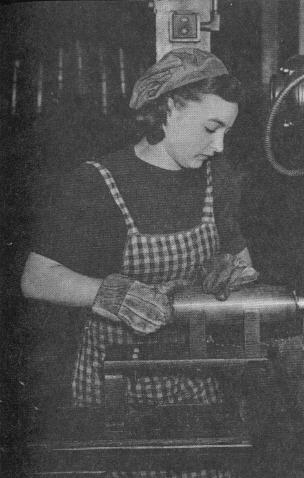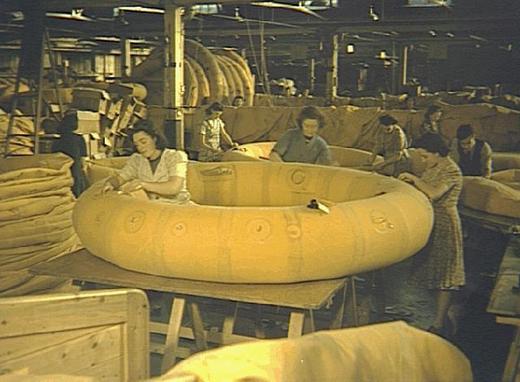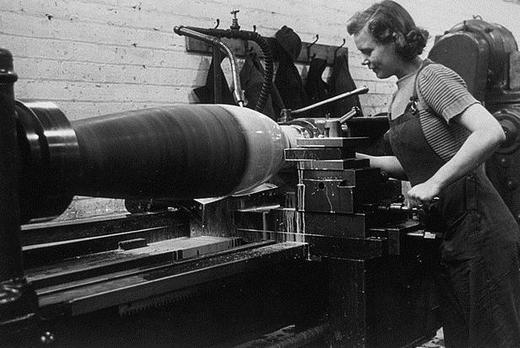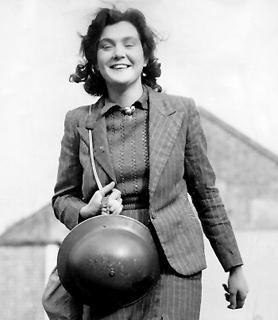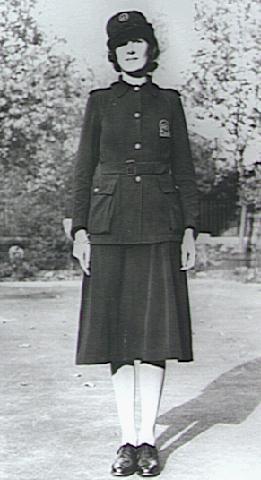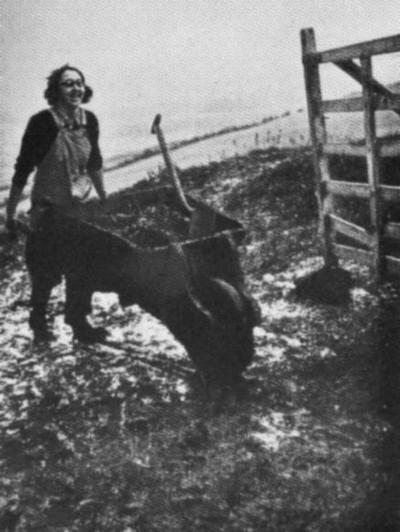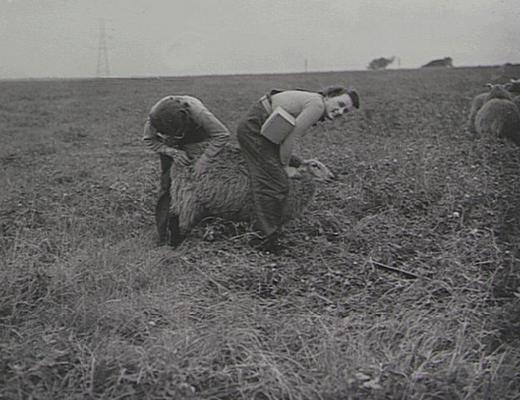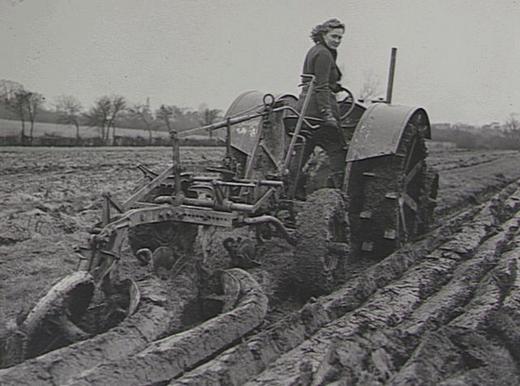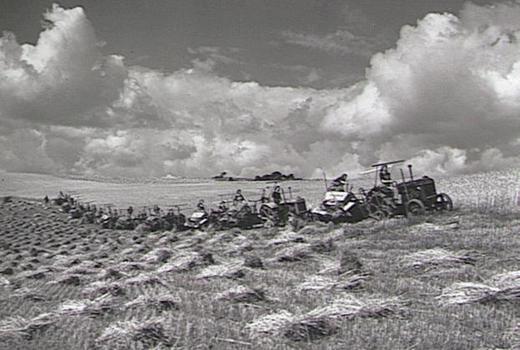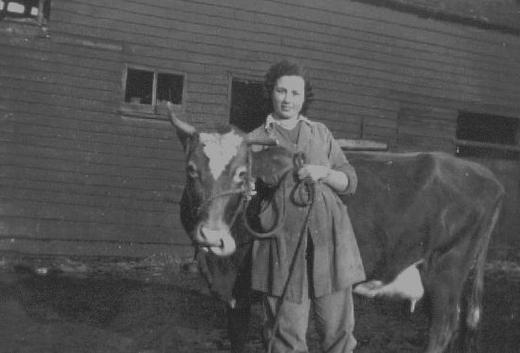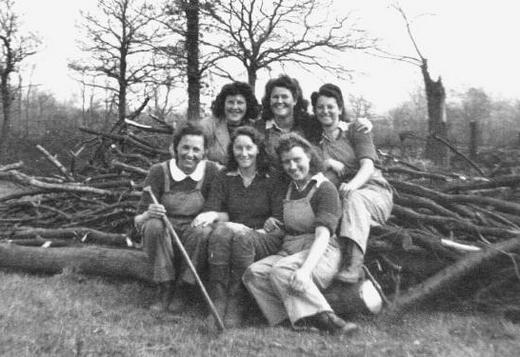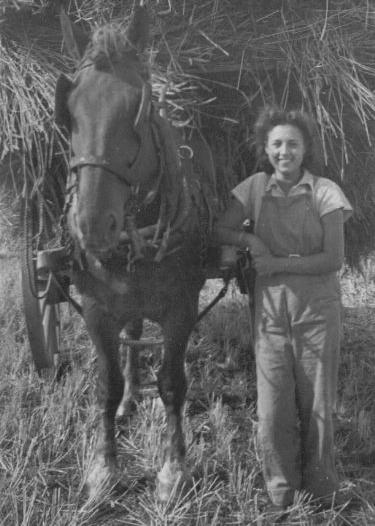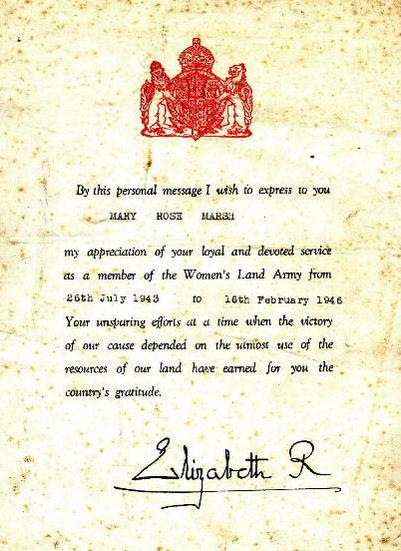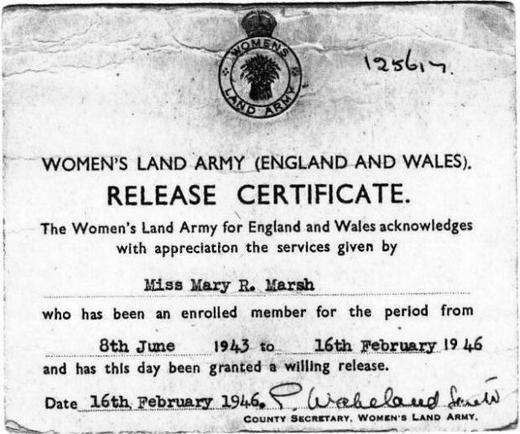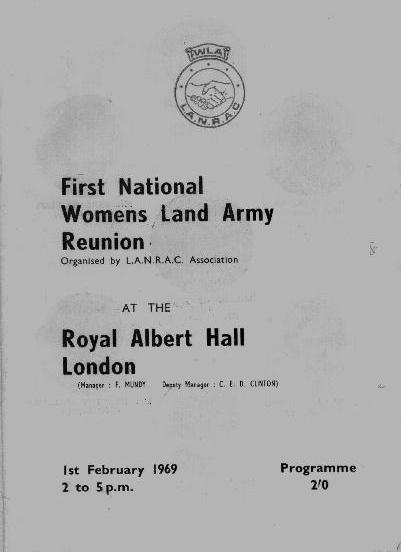British Women in War
Ernest Bevin, the Minister of Labour, had to boost production. He called on women to help and many women answered his call, but there were problems. The organisation was a muddle and many women did not want to work away from home.
In December 1941 unmarried women aged 19 to 30 found themselves conscripted. They were joined by many more married women who volunteered. Women could chose between a job in industry and the auxiliary services.
1. Women in the Auxiliary Services
A.T.S (Auxiliary Territorial Service) was attached to the army. Some 198 000 members, whose jobs included mechanics, clerks and operating anti-aircraft batteries.
W.A.A.F (Women’s Auxiliary Air Force). Some 182 000 members, whose jobs included radio-operators, mechanics, photographers and barrage balloon crews.
2. The Home Guard Auxiliaries. Vicky’s Story
In April 1943 women were ‘officially’ allowed to join the Home Guard although in a non-combatant role. No uniform was issued for these Home Guard Auxiliaries, but the official recognition was the issue of a brooch badge in a plastic material from July 1943.
As can be seen from Vicky’s story these rules were often bent, she appears in ‘bluette’ uniform with other members the Air Ministry Auxiliary Section (AMAS) and was taught the use of sten gun and rifle.
In 1943 Vicky, a Clerical Officer in the Air Ministry, became one of the female members of the Home Guard Auxiliaries:
The older male Air Ministry Civil Servants had formed the Air Ministry Home Guard (AMHG) section. They requested the official presence of females and thus the Air Ministry Auxiliary Section was formed. I was asked by the Sergeant AMAS (Secretary to Major Campbell, AMHG) if I would be Corporal in charge of cooking dinner for the Home Guard on duty evenings. I was pleased to agree to the request made of me. The duty involved my being allocated a certain number of food points and cash to select a suitable menu of my own choice and buy the food accordingly. I bought the food from little shops in Drury Lane. On duty night I had to delegate the cooking preparations to the various members of my squad, My policy was that a «boss» should always work with her team and thus we all worked as equals to produce a good supper for our (25?) Home Guard men. My sole cooking experience of course was my years Cookery course at the Westminster Institute 1938-39. We slept at our HQ, Kingsway. To look really official we were issued with a uniform — a navy blue boiler suit, a badge and a navy hat similar in shape to the Army and Air Force Uniform.
Not only were we to be cooks but also to learn out drill to march well on parade (once through London) trying to keep in step and to become good marks women with guns. On Friday’s at lunchtime we had musketry lessons at a nearby rifle range. I was a keen learner always trying to score a «bulls eye». We learned to use sten guns also. We were to be alert for German’s being parachuted into the Kingsway. Fortunately the occasion never arose for us to use the sten gun officially. It was a treacherous weapon capable of mowing down a number of bodies and could easily become out of control, especially if manoeuvred by we enthusiastic A.M. Clerks. I attended lectures on street fighting.
3. Women in Industry
As men in greater and greater numbers were absorbed into the defence forces their womenfolk stepped forward to play a magnificent part in the factories. By the middle of 1943, there were 8 million women out at work.
4. Women in Civil Defence
Some 375 000 women members, whose jobs included: air-raid warden; ambulance drivers; manning first-aid posts and fire women.
Many women wanted to join the Home Guard, but it was not until April 1943 that they were ‘officially’ allowed to join although in a non-combatant role. Prior to this a number of ‘Women’s Home Defence Leagues’ were formed, sometimes referred to as ‘amazons’.
5. The Women’s Land Army (WLA)
Britain imported about 60% of its food before the war; now, she would have to grow most of it. Above all it meant growing more wheat and potatoes. The amount of land used for growing crops increased by 50% during the war, mainly by using pastureland and marshland.
The Women’s Land Army filled many of the jobs left vacant when men went to fight. The Land Army was started by Lady Denman and by 1943 there were some 90 000 young women, called ‘Land Girls’, employed on the land.
Work on the farms was very hard. At harvest time they worked during all the daylight hours, 7.30 am to 9.30 pm and in winter it was very cold. Farmers at first doubted whether they could do the job, but many proved how useful they could be — even beating local men in horse-ploughing competitions.
Some 1 000 young women trained as rat catchers — a very useful job — a rat could eat about 50kg of food in a year.
Mary’s Story
Mary originally worked in a large department store; as a lift girl, in the millinery department selling dresses, coats and gowns, and as a window dresser. In March 1943 she enrolled in the Timber Corps and was taught to use axes, crosscut saws, and circular saws for tree work in saw mills, but got thrown out through being under age and was told to re-enlist when old enough.
Mary then joined WLA in July 1943, her training at the ‘Kingsmead Hostel’, Roydon, Hertfordshire was minimal, and the job was learned as one went along, being ‘farmed’ out to various farms in the area.
As a member of the WLA Mary was given a wide range of jobs both inside and outside, including stoking the boilers for the greenhouses, humping coal, caring for tomatoes and cucumbers in temperatures well over 100oC. Outside the work was no less varied, there was always the back breaking work in the fields of picking and bagging potatoes, planting cabbage or brussel sprouts, cutting them when ready in freezing temperatures and of course hoeing. In the summer harvesting, stooking sheaves, threshing and building haystacks. At all times of the year digging ditches, tree felling and rat and mole catching.
Mary was at Sewardstone Hall Farm for about 18 months doing ‘Dairy’ work, milking, mucking out, caring for calves, feeding calves, and looking after poultry. Mary recalls,
The two of us on Milking would be up at 4am. wash in cold water with jug and basin, no bathroom facilities, (there was an outside loo!) tea in a thermos saved from the night before, a hunk of bread and dripping before Milking, starting at 4.30.
At Sewardstone Hall there were five Land Girls all in one bedroom with three double beds.
Late one November evening in 1944, a V2 rocket landed just 100 yds off, to the rear of the main farm buildings, it took most of the roof of the farm house off and the dairy which was close by, demolished a large barn where the tractors were parked and taking out all the windows every where else, the crater was big enough to put two buses in.
A farm workers bungalow was close by the edge of the crater, damaged of course but thankfully no serious casualties.
The five LA girls got covered with glass and plaster but no one was hurt, in fact three had to be woke up having slept through the explosion!!
When I looked up to the ceiling, having been awakened by our ‘foster mother’, all I saw was stars and clouds and rafters!
Getting the cows in from the fields early morning. It was not an uncommon sight to see and hear V1’s pop-popping in the sky as they passed over, it became rather scary when the motor stopped for one never knew where it would come down.
A Land Girl was paid Ј2.15s.0d (Ј2.75) for something like 60 hours a week plus, out of that they had to pay money for their accommodation, in Mary’s case Ј1. 8s .0d (Ј1.40) a week.
Mary served in the WLA until February 1946. On her discharge she received no gratuity from the government, but was ‘permitted’ to keep her overcoat, one shirt and one pair of shoes. Everything else was returned to the Ministry of Supply and sold off by them as surplus. Today, the WLA armbands — which the ‘Land Girls’ wore with pride — can be bought for between Ј40 — Ј50.
Many of those who subscribed to the ‘War on the Home Front’ still feel badly let down by Winston Churchill.
Continue reading: The Women’s Voluntary Service in Britain
Source: http://myweb.tiscali.co.uk
